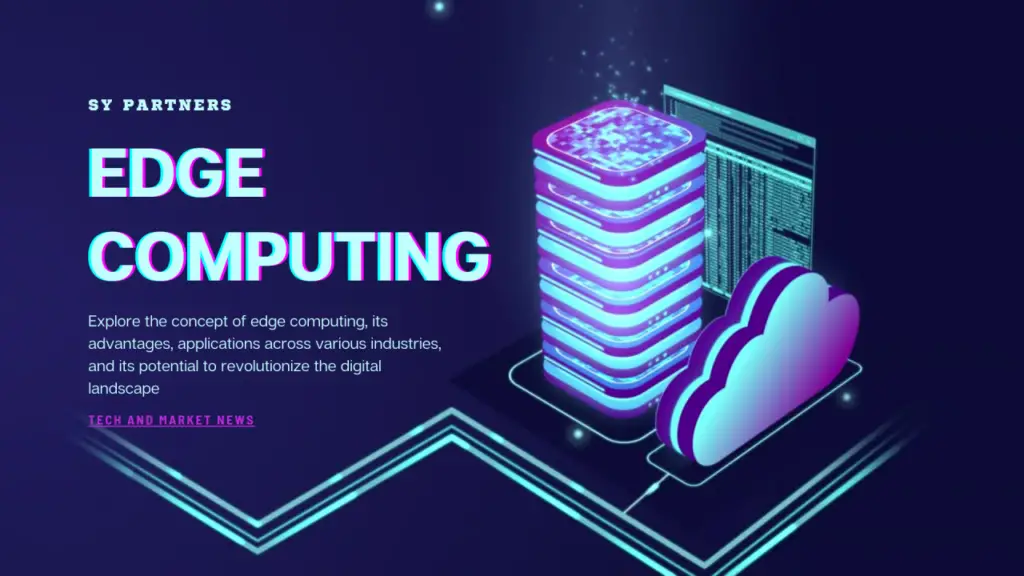How Edge Computing will disrupt data processing in 2024—core benefits and future trends.

Edge computing has taken center stage as a game-changing movement in data processing today. Making computations closer to sources of data, it solves some of the most critical challenges and unleashes multiple opportunities across many industries. This article discusses some of the main advantages associated with edge computing and predicts trends that in 2024 will define its impact.
Understand edge computing:
It is the phenomenon whereby processing and data storage are brought closer to where they are needed. Unlike traditional cloud computing, edge computing distributes central processing power out to the “edge”—closer to the source of data—so it is a decentralized concept. It significantly reduces latency and thus improves performance and overall efficiency in handling data.
Key Advantages of Edge Computing
- Less Latency and Faster Response Times
The most radical of the advantages of edge computing is its ability to minimize latency. Basically, this means processing data closer to its source. Hence, it dramatically reduces time devoted to traveling to and from centralized data centers. This is a necessity for applications that require real-time responses—think autonomous vehicles, smart manufacturing systems, and live-streaming services. - Improving on Security and Privacy
Edge computing provides increased security because critical data is closer to the source; hence, there is less traversal of data over long distances that can make the network vulnerable. With this kind of local approach, it minimizes the risks related to data breaches and improves privacy compliance in high confidentiality information industries. - Bandwidth Efficiency:
Moreover, the exponential growth in IoT devices and data generation has led to bandwidth congestion. Data in edge computing is handled locally; only very essential information gets transmitted to the cloud. Accordingly, this reduces the volume of data being transferred over the network considerably and thus makes effective use of bandwidth, cutting down on operational costs. - Better Reliability
Decentralization in edge computing gives more reliability to data processing operations. That is, even if the connectivity to the central data center gets disrupted, edge devices still can operate independently and sustain services without disruption—operational continuity guaranteed.
Trends to Watch for Edge Computing in 2024
- Integration with 5G technology
High-speed and low-latency connectivity from 5G networks will be needed for edge computing to process data in real-time. This synergy at the intersection of edge computing and 5G is going to unlock new opportunities in augmented reality, smart cities, industrial automation, and much more. - Growth in IoT and Smart Devices:
This means that, in the field of management of this huge amount of data resulting from surging IoT devices, edge computing will be at the forefront. Smart gadgets and sensors will mainly depend on edge computing for data processing locally, facilitating faster decision-making and smarter operations. - Edge AI Emergence
The other key trend is Artificial Intelligence at the Edge. Edge AI refers to the deployment of AI models on edge devices for real-time analytics and decision-making. This development will further spur innovations in areas such as predictive maintenance, personalized user experience, and intelligent video surveillance. - Augmented Edge Infrastructure and Ecosystems
In this regard, edge computing growth will act as a catalyst for the further development of more complex forms of edge infrastructure and ecosystems. These include enhanced edge hardware and software platforms and management tools to make edge deployments easier while also fitting in seamlessly in current IT environments.
Conclusion
While edge computing has been an emerging technological trend, it is also a basic transformational force at work behind the future of data processing. Offering reduced latency, increased security, better bandwidth efficiency, and improved reliability, edge computing is going to disrupt a wide array of industries and applications. Further ahead in 2024, the integration of edge computing with 5G and AI is going to amplify this impact more, pointing the way toward more innovative and efficient solutions.





